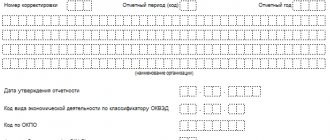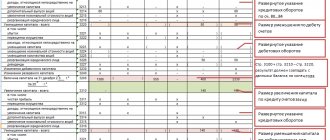What is included in business expenses for wholesale and retail trade enterprises?
Selling expenses for wholesale and retail trade enterprises include all sales costs, for example:
- expenses for maintaining warehouses and offices;
- wages of employees engaged in trade, including office workers;
- security services;
- depreciation of commercial and office equipment;
- advertising expenses;
- entertainment expenses;
- all other costs that relate to distribution costs and are reflected in the debit of account 44.
Budget
Budgeting is a modern financial tool designed by enterprises to implement certain goals. Timely preparation of budgets and their adjustment are an important detail in their formation for an enterprise. At the same time, a budget for business expenses is also drawn up. With its help, you can determine the company’s costs for market research, product advertising and sales.
In the process of drawing up the budget, it is necessary to take into account the fact that its amount is taken into account including VAT without depreciation of funds. For business expenses, it is calculated by month. If necessary, this budget can be broken down by day. The schedule must be drawn up daily.
Selling expenses for manufacturers
This type of cost includes manufacturing companies the costs of selling finished products, which, in particular, can be:
- product packaging costs;
- transportation costs for moving to the places where products are sent;
- commission fees;
- costs for finished product warehouses;
- advertising expenses;
- entertainment expenses associated with product promotion;
- other similar expenses.
Firms that procure and process agricultural products may additionally include:
- general procurement expenses;
- expenses for maintaining procurement and receiving points, including keeping livestock and birds there, and other similar expenses.
ConsultantPlus experts explained in detail what other costs are written off as commercial expenses. Get trial access to the legal reference system and study the material for free.
For information on how sales expenses are collected in accounting, read the article “Accounting entries for business expenses.”
What features should be taken into account?
Commercial expenses can be divided into semi-fixed and semi-variable. Depending on the market segmentation, they can be grouped according to a variety of criteria. The company's costs are related to sales volumes. This will become an economic justification for their appearance and distribution. If a company implements a program to reduce sales costs, it should be understood that sales volumes are unlikely to increase; rather, they will even decrease.
Variable costs must be planned depending on the life cycle of the product, expressing them as a percentage of sales volume. If they occupy a significant role in the enterprise, they need to be adjusted regularly as the business expense management system is changed.
How are business expenses written off in accounting?
The costs accumulated on account 44 are written off monthly as a debit to account 90. However, at the end of the month, account 44 may have a balance related to the balance of unsold goods or unsold finished products. This balance is formed due to the distribution of transportation and procurement expenses (TZR), among which in the instructions for the chart of accounts of accounting, approved by Order of the Ministry of Finance of the Russian Federation dated October 31, 2000 No. 94n, costs are distinguished by type of activity:
- for packaging and transportation - in production;
- transportation – in trade and intermediary activities;
- procurement of agricultural raw materials, livestock or poultry - in agricultural processing organizations.
Experts from ConsultantPlus explained in detail how to reflect TRP in accounting. To do everything right, get trial access to the K+ system and switch to the Ready-made solution for free.
Distribution is carried out by calculation.
Read about the nuances of such distribution for goods in the material “Distribution of transport costs for the balance of goods.”
Product delivery costs
The difficulty of accounting for transportation costs is that it is necessary to carefully monitor the terms of the supply agreement. There is the concept of free place, which characterizes the point of delivery of goods made at the expense of the seller. Most often, companies use 4 types of transportation:
- pickup (or ex-warehouse of the seller) - delivery costs are borne by the buyer;
- ex-carriage of the place of departure - costs are distributed between the buyer and the customer;
- ex-warehouse of the customer - the cost of delivery is fully paid by the supplier;
- ex-carriage of destination – costs are charged in part to both the customer and the seller.
It is possible to apply other terms of payment for transport services provided for in the contract. It is worth remembering that part of business expenses can only include those amounts that are paid entirely at the expense of the enterprise. If the buyer plans to reimburse costs, then they do not participate in the formation of the cost and are taken into account on account 62.
How are selling expenses reflected in the income statement?
Selling expenses included in account 90 are taken into account in the total cost of sales and are reflected in the financial results report in line 2210 “Commercial expenses” specially designated for them.
If account 44 is not used in accounting, then expenses that qualify as commercial are usually reflected in account 26, which can be closed in 2 ways:
- through inclusion in the cost of finished products by distributing costs collected on account 26;
- by writing off the entire amount of expenses accumulated on account 26 immediately to the debit of account 90.
In the first case, in the financial results report they will be included in the amount of line 2120 “Cost of sales” as the cost of products sold is written off, and in the second they will be included in line 2220 “Administrative expenses”.
However, it is possible not to use account 44 only if the expenses collected on it do not have a component subject to mandatory distribution. And this is a rather rare situation.
For more information about each line of the income statement, read the article “Filling out Form 2 of the balance sheet (sample)” .
What are management costs?
Administrative expenses include amounts generated on account 26 and associated with the maintenance of the company’s common property and the organization of its activities. A distinctive feature of such expenses is that they are not directly related to production, provision of services or trade. An example of management expenses would be the following expenses:
- on guard;
- payment for the Internet, housing and communal services and communications;
- entertainment expenses;
- salaries of accountants, lawyers, personnel officers and other administrative and management personnel;
- labor protection and seminars for workers;
- stationery.
Administrative expenses can be included in the cost of production as products are sold. Then the accountant must write them off by posting to the debit of account 20 (23 or 29) and the credit of account 26.
The second way to account for administrative expenses is to attribute them in full to the cost of the reporting period in which they arose. In this case, the accountant will post Dt 90 Kt 26.
The chosen procedure for accounting for management expenses must be specified in the company’s accounting policy (clause 20 of PBU 10/99).
The cost accounting algorithm depends on the type of activity of the company and each taxpayer approves the chosen option for his own needs. Find out how to correctly record costs in accounting policies with the help of advice from ConsultantPlus. Learn the material by getting trial access to the system for free.
Learn more about account 26 from the publication “Account 26 in accounting (nuances).”
Are business expenses shown on the balance sheet?
Commercial expenses will be present in the balance sheet when there is a balance in account 44. This balance is included in line 1210 “Inventories” as a component of the expenses that form it (clause 20 of PBU 4/99, approved by order of the Ministry of Finance of the Russian Federation dated July 6, 1999 No. 43n).
For information about the balances of which accounting accounts form the amount on line 1210 of the balance sheet, read the material “Deciphering the lines of the balance sheet (1230, etc.)” .
Re-setting the TR
In this case, we consider the features of accounting in situations where transport costs for the delivery and transportation of goods (products) to the buyer are associated with the services of third-party organizations - these are the so-called logistics intermediaries. After all planned work has been fully implemented, an invoice for payment is issued to the client. The procedure is associated with tax risks, which makes it important to correctly reflect it in the financial statements. If necessary, the conditions for compensation for emerging expenses can be fixed within the framework of an agreement defining the main provisions of cooperation between companies.
Results
In the income statement, line 2210 reflects selling expenses written off to account 90, which are preliminarily collected under account 44 “Sales expenses”.
If there are costs subject to distribution as part of business expenses, account 44 may have a balance at the end of the month. This balance in the balance sheet will appear in line 1210. You can find more complete information on the topic in ConsultantPlus. Free trial access to the system for 2 days.
Examples
Let's look at how to correctly correlate expenses on accounting accounts at enterprises with different types of activities using some examples ( commercial expenses - accounting account 44 and current expenses - accounting accounts, say 25 “General expenses” and 20 “Main production”).
Example 1
Semenov and K LLC sells ceramic tiles.
In August 2015, employees received a salary of 230,000 rubles. At the end of the month, depreciation of fixed assets was accrued in the amount of RUB 25,000.
In addition, expenses for advertising services were incurred in the amount of RUB 70,800. (for convenience, we will assume that the supplier works on the simplified tax system, that is, there is no VAT) and documents have been received from the carrier in the amount of 44,300 rubles.
The following correspondence must be reported in financial accounting:
| Account correspondence | Amount, rub. | Contents of operation | |
| Dt | CT | ||
| 44 | 60 | 70 800 | Advertising documents taken into account |
| 44 | 60 | 44 300 | Accrued transportation costs |
| 44 | 70 | 230 000 | Employees' salaries accrued |
| 44 | 69 | 69 000 | Accrued fear. contributions (to the Pension Fund, FFOMS, Social Insurance Fund) |
| 44 | 02 | 25 000 | Depreciation reflected |
Example 2
Romashka LLC is engaged in the production of artificial flowers.
In June 2015, the accountant calculated the salaries of employees involved in production in the amount of 100,000 rubles. The salary of product packers amounted to 32,000 rubles.
Also in this period, depreciation of retail inventory was accrued - 10,000.00 rubles, and radio advertising was paid in the amount of 39,000.00 rubles. without VAT.
The cost of automobile expenses for raw materials was 23,000 rubles, the cost of services for delivery of the finished product was 58,000 rubles.
| Account correspondence | Amount, rub. | Contents of operation | |
| Dt | CT | ||
| 44 | 60 | 39 000 | Advertising expenses are reflected as part of business expenses |
| 44 | 60 | 58 000 | Transport costs are taken into account as part of commercial expenses (delivery of the finished product) |
| 25 | 60 | 23 000 | Services for the delivery of raw materials to production are reflected |
| 20 | 70 | 100 000 | Salaries paid to production workers |
| 20 | 69 | 30 000 | Accrued fear. contributions to the Pension Fund, Social Insurance Fund, Federal Compulsory Medical Insurance Fund for people employed in production |
| 44 | 70 | 32 000 | Salaries paid to packers |
| 44 | 69 | 9 600 | Insurance contributions to the Pension Fund, Social Insurance Fund, and Federal Compulsory Compulsory Medical Insurance for employees of the packaging workshop have been calculated |
| 20 | 02 | 10 000 | Depreciation |
You can read more about postings to account 44 in the article “Posting Dt 44 and Kt 44 (nuances).”
Primary documents confirming TR
Within the framework of contracts drawn up between manufacturers and trading enterprises, on the one hand, and logistics intermediaries, on the other, the Consignment Note serves as documentary evidence of the actual provision of services. According to the current standards, enshrined within the framework of paragraph 2 of Art. 785 of the Civil Code of the Russian Federation, as well as the ninth rule of government decree No. 272 of April 15, 2011, in situations where the contract does not otherwise provide, responsibility for drawing up the technical specifications rests with the sender.
To indicate the price and value, the TORG-12 consignment note is filled out, and the accounting document confirming the movement of goods and serving as confirmation when issuing an invoice for delivery is the consignment note (1-T), which looks like this.









